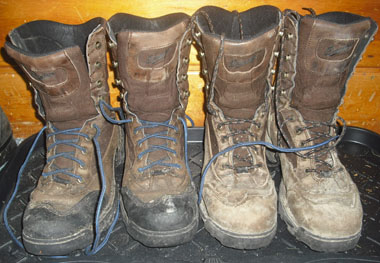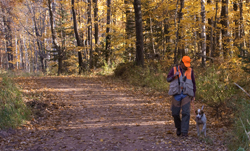Grouse dog basics: right genes and good boots

Common sense should tell us that the best and most efficient way to get a dog with the inherited ability to find and point ruffed grouse would be to get one from a line of proven grouse dogs. But common sense, often, is not so common. People mistakenly believe that any well-bred bird dog will make a grouse dog, even if none of the dogs in the pedigree have ever hunted, much less pointed, a grouse. While some could develop into fine grouse dogs, the odds don’t favor them.
What are the genetic qualities of a grouse dog?
To start:
• strong hunting instincts
• above average intelligence
• right amount of point
Also important, though:
• physical strength and stamina
• desire to hunt in heavy, punishing cover
• good hearing and eyesight
Finally, a little fine-tuning:
• the instinct to range in a manner that effectively covers ground and yet stays in contact with the hunter
• scenting ability that allows accurate location of a bird while the dog is moving through the woods at a fast pace
• capability to follow a running bird, possibly for hundreds of yards, and get it pointed
So, you bought a puppy prospect with the right genes; now the work begins.
It will take about three seasons of consistent exposure for that prospect to develop into a grouse dog. Consider a good year when one could average three grouse flushes per hour. For a hunter walking at 2 mph, that’s about 1.5 grouse per mile. If you hunt four hours per day for 10 days, you will have walked 80 miles to flush 120 grouse. (4 hours x 10 days = 40 hours. 40 hours x 2 mph = 80 miles. 80 miles x 1.5 = 120 grouse).
After three seasons you’ll have walked about 240 miles!
Bottom line? Buy a puppy from a line of proven grouse dogs and buy two pair of good boots. Find hunting spots with good grouse habitat. Turn your dog loose and start walking.
By the time both pairs of boots are worn out, you’ll have a grouse dog!





Leave a Reply